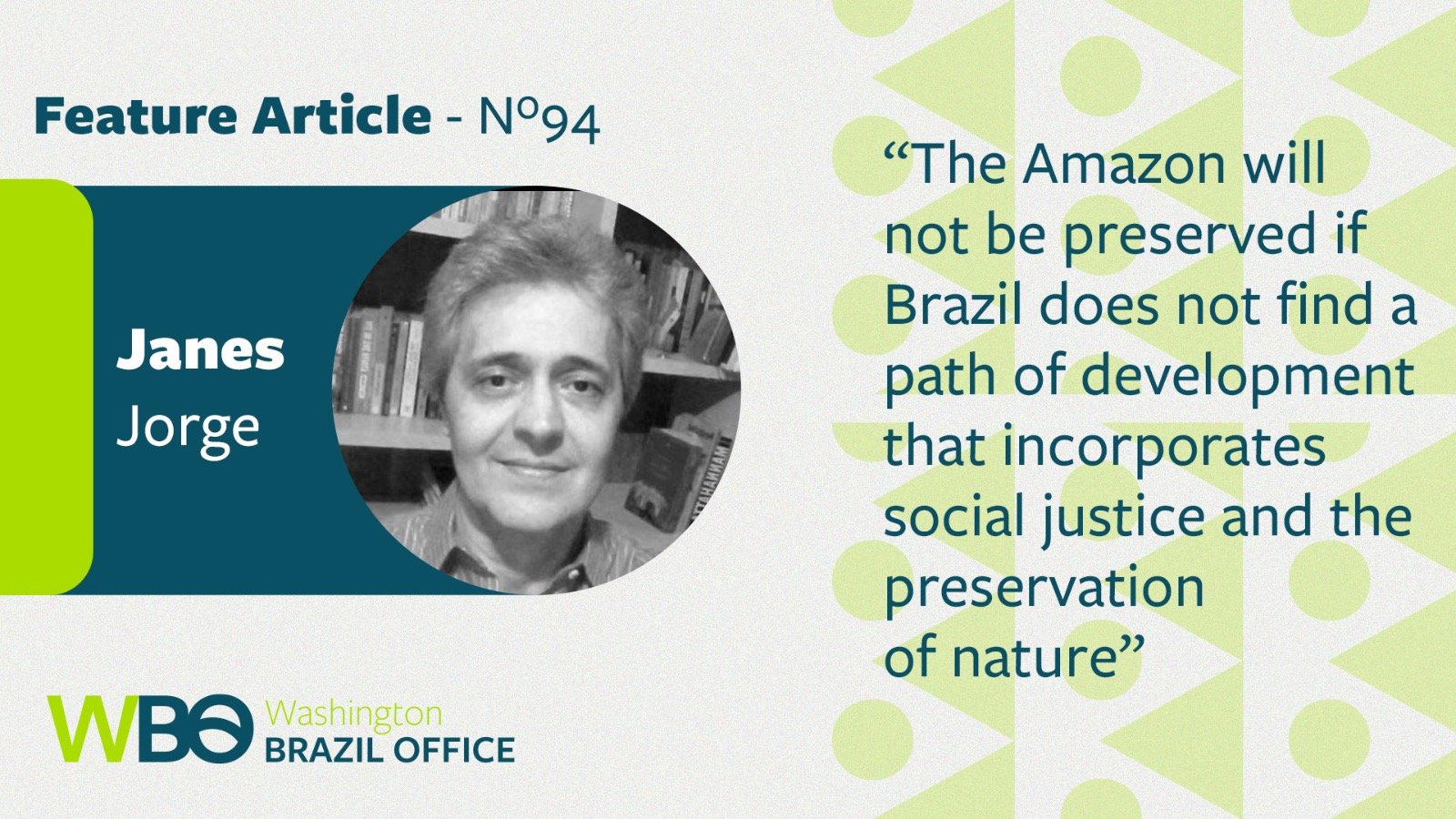The Amazon, Brazil and Democracy, 2013-2023.
Janes Jorge is a professor of the undergraduate course and postgraduate program in the Department of History at the Federal University of São Paulo (UNIFESP) and carries out research in the area of environmental history. This text was originally written for issue 94 of the WBO Newsletter, published on November 24, 2023. Fill in the form at the bottom of the text to access and subscribe to the WBO weekly newsletter in English.
The Amazon will not be preserved if its Brazilian portion, which corresponds to approximately 60 percent of its area, is not preserved. Furthermore, the preservation of the Brazilian Amazon is not possible without strengthening Brazil’s democracy and improving the material living conditions of the vast majority of the population, especially those who live in the Amazon. It is urgent to expand public policies that promote human development and expand environmental education. Around 867,919 indigenous people reside in the Brazilian Amazon, approximately 51 percent of Brazil's indigenous population.
Since the 1940s, the increasing occupation and economic exploitation of the Amazon has been a national issue. “Brasília is the springboard for the conquest of the Amazon” was what Dom Carlos Carmelo de Vasconcelos Mota said, when celebrating the first Catholic mass in the Federal District, when it was still empty. One of people who recorded the statement was journalist Maurício Vaitsman, author of reports on the construction of Brazil's new capital in Rio de Janeiro newspapers between the end of 1958 and the beginning of 1959. It is no coincidence that, in addition to Brasília, Vaitsman wrote articles about the Brasília-Belém do Pará highway, also initiated by President Juscelino Kubitschek (1956-61), which connected the capital to the Amazon and was another great and decisive project in the territorial control of Brazil
In the case of the construction of Belém-Brasilia highway, the difference between today's sensitivity towards the forest and the lack of sensitivity that existed during the construction period has had a significant impact. Journalists reported the ceremony commemorating the felling of the last tree on the road, in Açailândia which is a municipality in the state of Maranhão, where two work fronts would meet, one, coming from the north and the other from the south. On February 1, 1959, President Kubitschek, his wife, daughters, ministers, the ambassadors of Belgium, Switzerland and the Dominican Republic, military and civil authorities, politicians, and Brazilian and foreign journalists all arrived by plane in the middle of the jungle. In addition to the work groups, they saw a huge Jatobá tree being knocked down by two tractors, but not before resisting for around two hours, until it finally fell and dragged countless trees with it. It was emblematic of progress overcoming nature, seen as an obstacle or even an enemy. Today, similar scenes are often repeated, but the common rule is to sweep them under the rug. At the time it was argued that once the agricultural function of the land was established, the forest lost its cultural meaning, as the first would be more profitable than the second. And it was argued that opening roads was colonizing the region. In the Brazilian context, it would be more correct to say that this development degrades nature, and, in many cases, society as well.
The great advance on the Amazon occurred during the dictatorship (1964-85), which carried out this endeavor in its own violent and predatory way, attacking the forest and the people who lived there. It was aggression on a large scale, which benefited big capital and all types of opportunists in the business world. During this period, misguided infrastructure and economic development projects were carried out, which left the country with a series of explosive environmental and social conflicts and a history of cruelty and destruction that researchers have documented.
The redemocratization of Brazil, which was marked by the promulgation of the 1988 Constitution, allowed the country to set an agenda for the Amazon and its people using new paradigms as a reference that sought to overcome the predatory exploitation of human beings and nature. Since then, there have been victories and defeats for the defenders of the Amazon and its people, but, from 2016 on, the rise of the extreme right in the country and the retreat of democracy allowed the forces of destruction to reign once again. The victory of President Luiz Inácio Lula da Silva in 2022 and the start of his government in January 2023, once again brought hope for democracy and the Amazon. That being said, it is still an open question whether the country is, in fact, experiencing another historic moment, and whether it has managed to definitively defeat the authoritarian threat.
In recent decades, the Amazon area has experienced great demographic growth and urbanization, which points to cities as decisive elements in its development and in overcoming its social needs and inequalities, as well as in promoting citizenship and scientific and technological advancement in the region. Amazonian cities in Brazil, despite their haphazard growth, face the same major social and environmental problems as other Brazilian cities. These include gigantic social inequalities and difficulties in expanding public services, including public transport and sanitation.
Given the urbanization of the Brazilian Amazon, it is clear that, when thinking about the region and its relationship to democracy and Brazil, there are certain regional specificities that we must take into account. The particular way in which society and nature relate there is part of what differentiates it from other Brazilian regions. That being said, the history of this area is what ties it to other parts of Brazil. As is evidenced by other parts of the country, the Amazon will not be preserved if Brazil does not find a path of development that incorporates social justice and the preservation of nature.

